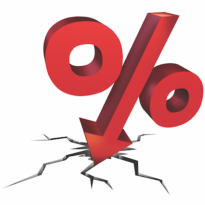The main problem with ESG is… Alasdair Wilson, investment techspert, the Verve Group, gets a few things off his chest.
Does anyone else wince when they hear ESG funds referred to as “ethical” or “do no harm”?
On 25 October 2022, the FCA released consultation paper CP22/20 as part of its Sustainability Disclosure Requirements (SDR) for fund managers with the aim of bringing about transparency and consistency within the sustainable investment product market.
As some of you may know based on my prior musings, my main gripe with ESG / sustainable funds is that they are not very ‘green’ despite the marketing around such investments suggesting very heavy leanings towards renewable energy and mitigating climate change. The first time I picked up on this was in the early stages of my finance career when I looked at the holdings within a ‘sustainable’ fund, and one of the main investee companies was Unilever. From my past life as a Geography teacher and our case studies of multinational corporations and environmental impact, they were one of the big destructors of rainforests for palm oil. So, what on Earth were they doing in a ‘sustainable’ fund?
Of course, now I know the answer is that there are many different ways of integrating sustainability factors into an investment fund, including allowing investment into companies that are striving to improve their impacts on the environment. This has only become clear to me through spending a few years focusing on investments and studying for a certificate in ESG investing, but how many advisers out there could confidently explain different methods of sustainable investing to a client? And why should they be able to? Advisers have enough on their plate already.
The main problem has been the fact that sustainability means different things to different people in the world of investing. Each fund house, each ratings company, each advice firm etc has their own different way of defining and integrating it in terms of sustainable investment. In turn, individual clients have their own unique definitions of what a sustainable investment might look like, and getting all of these factors to align has been practically impossible without detailed due diligence and having a proper look under the bonnet of these products on a case-by-case basis.
What the proposed ratings are aiming for is to start on standardising three of the main ways of bringing sustainability factors into a fund, and they are:
Sustainable Focus – invests mainly in assets that are sustainable for people and/or the planet.
Sustainable Improvers – invests in assets that may or may not be sustainable now, with an aim to improve their sustainability for people and/or the planet over time.
Sustainable Impact – invests in solutions to problems affecting people and/or the planet to achieve real world impact.
Knowing that the fund containing Unilever was labelled a ‘Sustainable Improver’ would have made it clear to me at the start what kind of companies are present within the fund, and also clear to the adviser what kind of strategy they will be recommending (i.e. the fund will invest in companies that are environmentally damaging, but are taking measurable steps in order to reduce this impact). This all ties in very nicely with advice firms’ new obligations under Consumer Duty to ensure good client outcomes and recommending easily understandable products to their end clients.
This was also just one (albeit major) component of the consultation paper, with other elements covering the use of certain terminology (ESG, Green, Sustainable) in naming and marketing of products; and ensuring that sustainability information is clearly displayed by distributors (e.g. platforms).
Of course, there are still plenty of issues to iron out, including the quality, scope, accuracy and consistency (between companies and, indeed, between different sectors) of data supplied by investees, which currently makes drawing meaningful comparisons between companies and between sectors very difficult. Additionally, there are the ins and outs of regulating all of this. There’s a long way to go with clearing up the sustainable investment sector but regulations on terminology and prominent labelling is at least a welcome start.
[Main image: maxim-tolchinskiy-W3y2crFkVIs-unsplash]




































